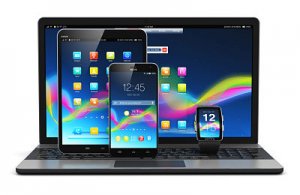|
|
 For the last couple weeks, we’ve been exploring the seismic shift in marketing that is being brought about by mobile technology and the new consumer attitude of “I want what I want when I want it.”
For the last couple weeks, we’ve been exploring the seismic shift in marketing that is being brought about by mobile technology and the new consumer attitude of “I want what I want when I want it.”
Fortunately the same technology can help us connect with and serve our audiences in a way that is meaningful to them. We need to remember that this is not about mobile technology. It’s about an evolution in our behavior as the world around us changes the rules of the game. And we need to evolve along with it.
I promised that this week we’d look at some examples of how brands are using mobile technology to solve problems that are creating buying or opportunity obstacles for their customers. Let’s take a look at a few:
Example #1: Mobile apps and alerts. One of the biggest challenges that doctors, pharma companies and pharmacists have is getting people to actually take their medicines on time and as often as they should. Not only does this impact the patient’s health outcomes, but from a business perspective, when people don’t take their meds properly, the providers lose out financially.
The solution? The Care 4 Today app was created by Johnson & Johnson’s pharmaceutical company, Janssen. The patient or caregiver loads all of their prescriptions into the app and when the patient is supposed to take something – they get an alert on their phone.
Example #2: Augmented reality. We’ve all been there. You’re standing in a store looking at something you want to buy but you aren’t quite sure how it’s going to fit with what you already have. This is particularly challenging for big-ticket items like furniture or large appliances.
Ikea came up with a great fix. With their catalog app, you can preview their furniture in 3D, and you can also use your smartphones to see exactly how the digital items will look in your home. After selecting a piece of furniture, you put the catalog itself on the ground, where it behaves like an anchor for the 3-D image of the chair or table. If you need to rotate the chairs so they face the window, you just rotate the catalog.
Example #3: Wearables/mobile apps and video. The scarcest of commodities for most people is time. People are constantly on the go, traveling, working too hard and too long and still wanting to stay healthy. Those are some pretty big barriers.
This is a solution that most of us are already familiar with because we’re surrounded by it daily. Look to your left and to your right. Odds are at least one of them is wearing a fitness wearable like a FitBit or Jawbone Up. Or they might be wearing an Apple Watch. These devices pair up with a mobile app to track sleep patterns, step counts and other health metrics.
One of the smartest aspects of many of these devices is that it creates a community of wearers who can encourage, challenge and coach each other.
As marketers, all the examples I’ve shared with you over the last few weeks should be a sharp reminder that our audiences are now learning that they can expect real time access, obstacle-free experiences and time-saving customized conveniences. A daunting mix of expectations for sure.
But they should also serve to remind us that the opportunity to actually connect and be of genuine value to our prospects and customers has never been more robust. It’s pretty exciting to realize we’re just at the infancy of this new era and we’ll be the ones who get to concept what’s possible and to carve out the new norms.
